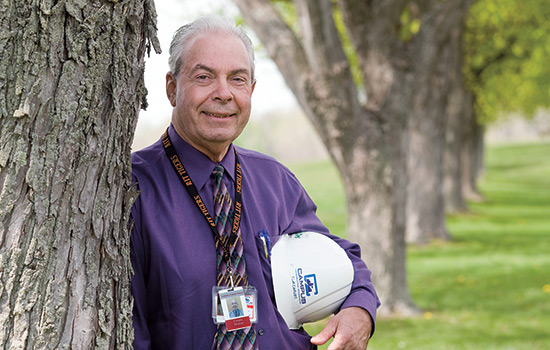Prison riot cleanup cements career path
A. Sue Weisler
Thomas Caruso '72 (finance and management) managed Attica prison riot repair efforts while he was a student.
Thomas Caruso ’72 (finance and management) has a co-op story perhaps like no other.
It was September 1971 and Caruso had just started football practice at RIT. He was finishing a summer co-op at the family-owned company, Caruso Electric, and preparing to begin the fall quarter.
Then on Sept. 9, the nation’s deadliest prison uprising broke out at Attica Correctional Facility. Forty-three people died from the riot, which ended four days later.
The state needed to hire contractors to rebuild the prison, and since Caruso Electric had done work for the state in the past, the company put in a bid. It turned out to be the lowest.
“I ran back into the co-op office and said I’ve got to do another work block,” Caruso says. “We just got Attica prison riot damage repairs.”
From that September until the following March, the company worked on rewiring the prison. Caruso, who researched the project and estimated the bid, became the project manager and supervised the foremen, who managed about 60 electricians.
“I went from being an office worker and running materials out to job sites to being a project manager,” Caruso says. “I managed the Attica project as a 22-year-old.”
Although Caruso delayed his classes, he couldn’t put football on hold. He arrived in Attica at 7 a.m. each day so he could leave by 2 p.m. to make it to RIT for practice. His coach was Tom Coughlin, who went on to win two Super Bowls as head coach for the New York Giants. Caruso was offensive captain.
Caruso says he learned management and leadership skills on the Attica job. And he learned that construction was his future career. After graduating, he worked full-time for Caruso Electric before moving to Christa Construction 20 years ago. He is now a vice president at Campus Construction Management, an offshoot of Christa’s K-12 division.
He manages school construction projects from Albany to the Adirondacks to New Jersey. He also visits RIT each spring to recruit students for co-ops and full-time work.
“The co-op system helped all of us make that transition from academia to the real world. And this was real, real world,” he says. “I never looked back after that. It set my career path for the next 40 years.”














